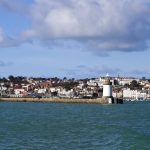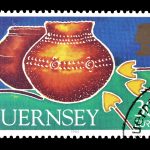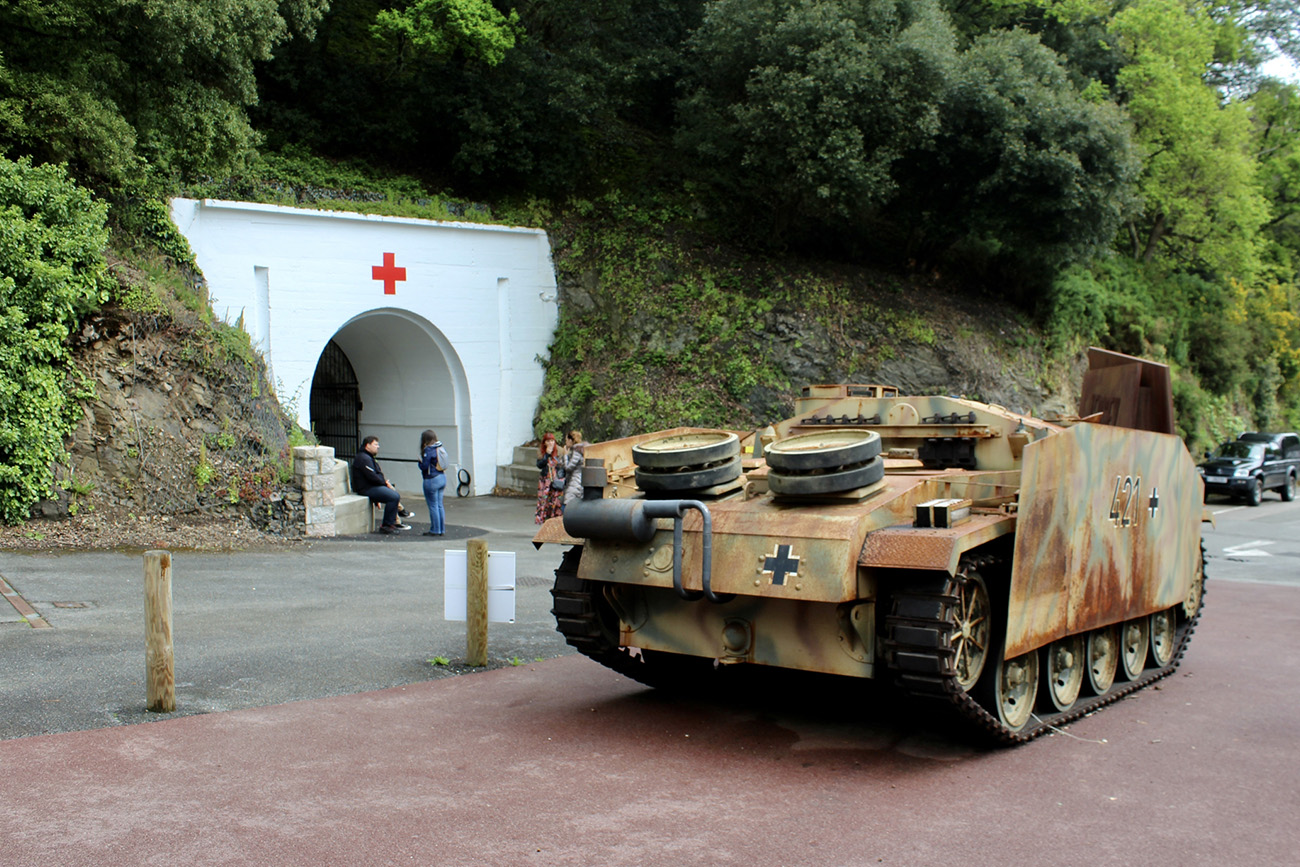
Alderney and the Channel Islands during the Second World War (June 1940 – May 1945)
Britannia Occupied
While Britain’s cities suffered extensive bombing campaigns and the British people suffered under rationing and the psychological toll of standing largely alone against Germany between the summer of 1940 and the summer of 1941, the country itself was not invaded.
That is apart from one particular part of Britain, one which is often overlooked. Just weeks later the Nazis occupied by the Channel Islands and would remain in control of the archipelago throughout the remainder of the war, all the way down to May 1945.
Overview of Occupation
The fact that the Channel Islands were occupied during the war was entirely a by-product of their geographical location and their proximity to northern France. For example, Jersey, the largest of the islands, lies just twenty-two kilometres west of the Cotentin Peninsula in Normandy on the French mainland, while it is over 130 kilometres from the southern coast of England.
The British High Command fully understood that it would be impossible to maintain control of the islands and so began a strategic retreat from the islands in the early summer of 1940 as the Nazis invaded the Low Countries and northern France. However, the speed of the German advance into France shocked everyone and in the end while many children and elderly inhabitants were successfully removed from Jersey, Guernsey, Alderney and the other islands in May and June 1940, the retreat was not fully implemented before the Nazis occupied the islands in late June.
Of the population of some 90,000 individuals across the islands, only 25,000 or so were successfully evacuated.
As an interesting aside, one of the evacuees was Brigadier General Charles de Gaulle, who stopped on the islands on the 17th of June on his way to London where he would eventually become the leader of the French Resistance in exile.
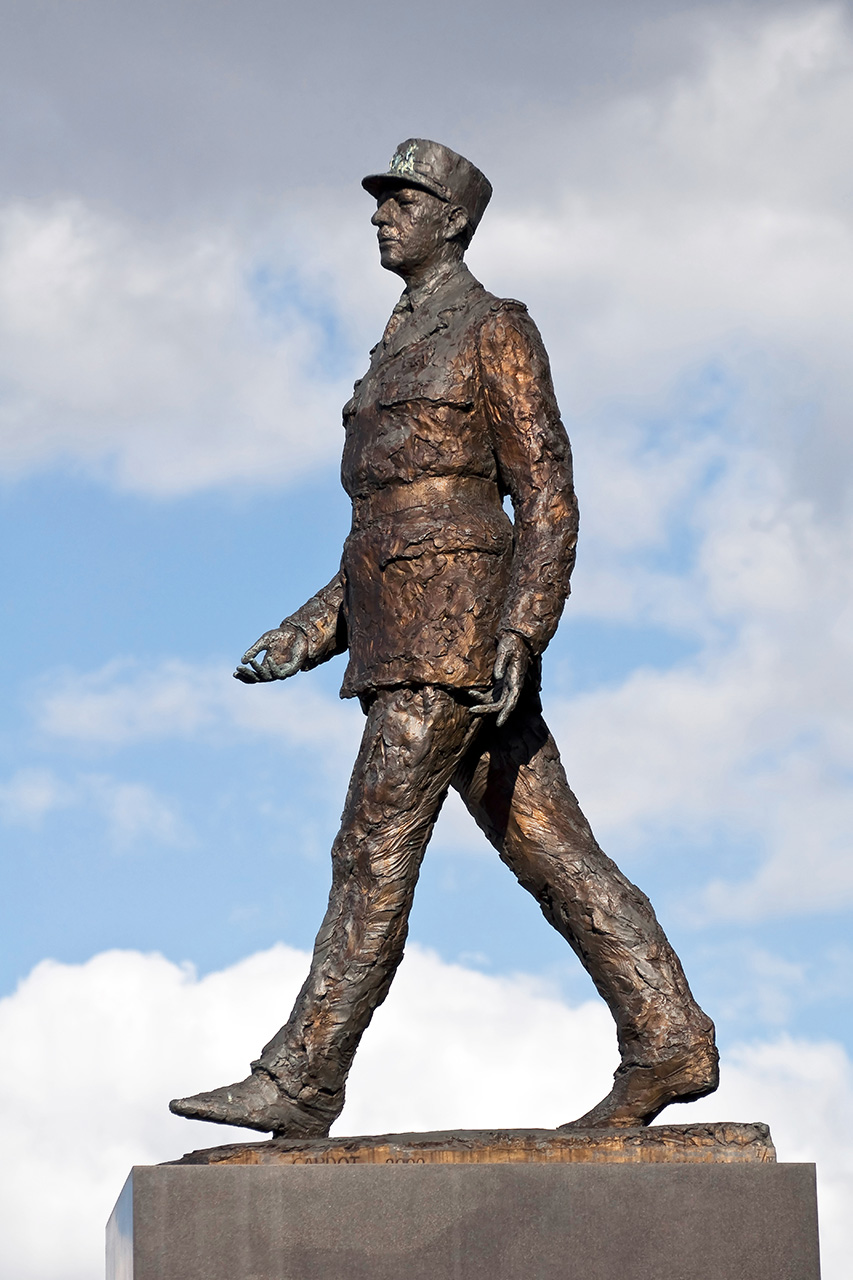
Charles de Gaulle
The governors left the Channel Islands on the 21st of June. On the 28th of June a Nazi squadron bombed St Peter Port on the island of Guernsey and carried out similar raids against Jersey. At this stage they were unaware that the British had effectively abandoned the islands.
Consequently, the islands were occupied from the 30th of June onwards and by the 4th of July they were fully under Nazi occupation.
A civilian government continued to operate on the Islands under Nazi rule, but it had little freedom of action and the German military forces were effectively in charge. A new ‘Scrip’ or occupation money was introduced. Radar stations and other military installations were set up to facilitate the Blitz of mainland England and naval bases were also established here as part of the ‘The Atlantic Wall’, Germany’s vast coastal defences stretching from the Pyrenees in the south-west all the way north to Denmark.
Approximately 2,000 islanders were deported to the mainland, while concentration camps were set up on Alderney and elsewhere, as we will see in more detail presently. There were no major efforts made to resist the German occupation. There were tens of thousands of German troops stationed here in what was an enormously militarised part of occupied Europe in terms of the size of the civilian population.
Most of those who have been expected to resist German occupation most trenchantly, men of fighting age in their twenties, thirties and forties, were amongst those evacuated in the summer of 1940 so that they could join the British army in England. Hence, as John Lewis, a medical doctor from the islands, put it many years later, there was little point in trying to resist the occupation: “Any sort of sabotage was not only risky, but completely counterproductive.”
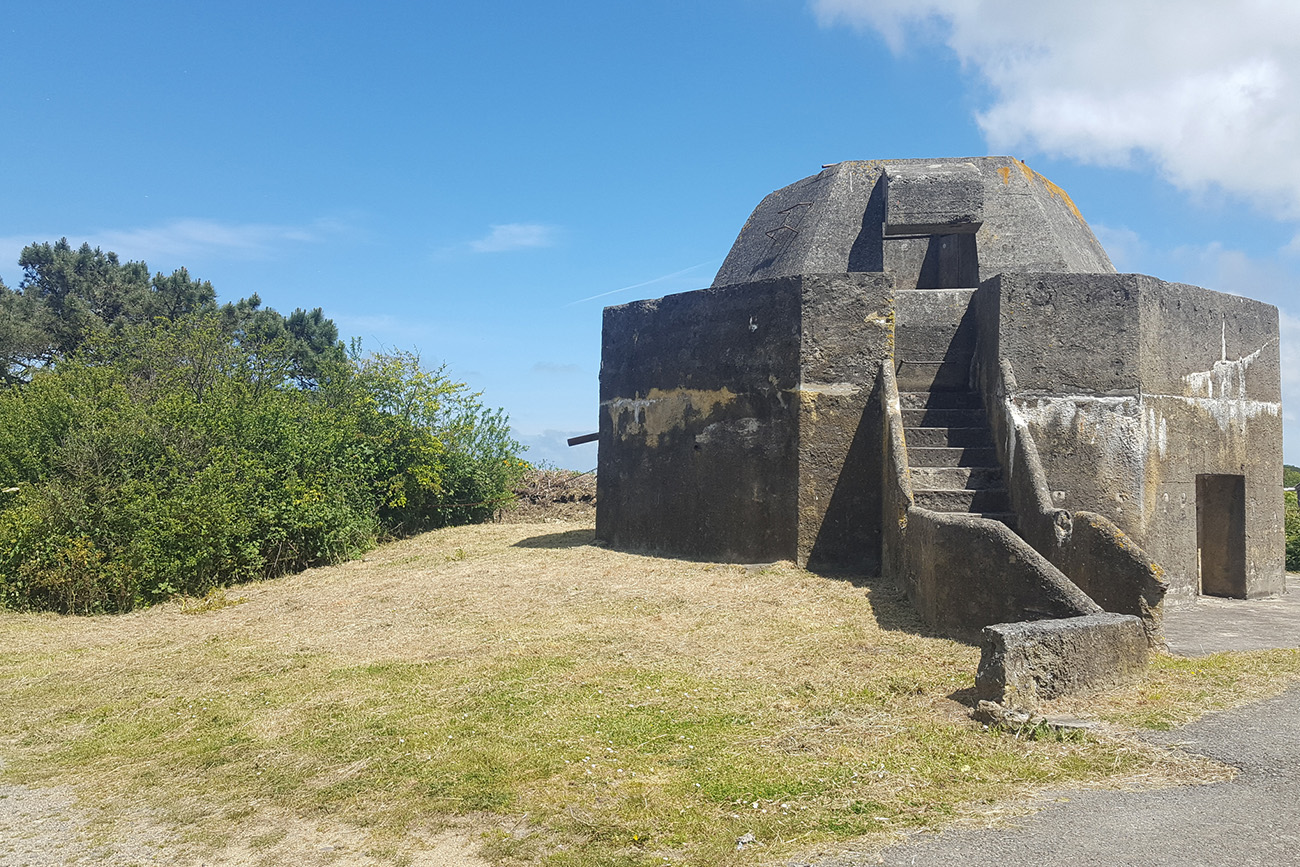
German Fortifications, Guernsey
The Occupation of Alderney
Of all the Channel Islands, Alderney had the highest percentage of evacuees and was relatively uninhabited by the time the Nazis arrived there on the 2nd of July 1940.
Consequently, it was chosen as the site for many of the Nazi military and naval installations as the prospects of civilian sabotage of sites there were limited and the concentration camps which were eventually built on the island would be shrouded in greater secrecy than if they had been built on Jersey or Guernsey.
The island also has a geographical significance as it was the most northerly of the larger islands in the archipelago and as such was closest to England and most suitable for the installation of radars, while it is also the closest to mainland France, being just 15 kilometres from the Cotentin Peninsula. As a result, it was the most suitable island to transport goods and prisoners to and from the mainland.
It was for these myriad reasons that Alderney was chosen as the site of the Nazi concentration camps on the Channel Islands. It also remains dotted with German fortifications down to the present day.
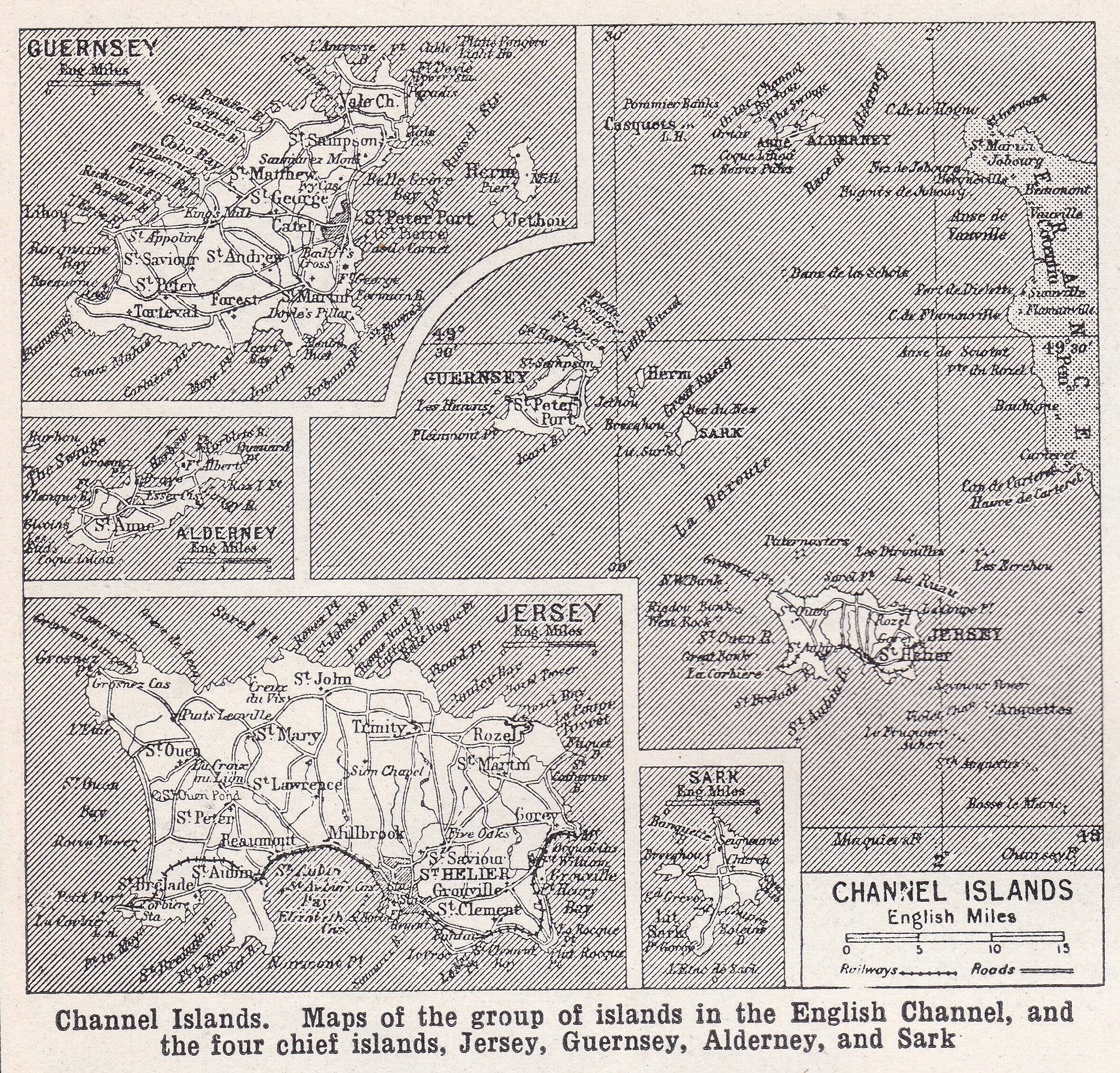
Old map of the Channel Islands
The Labour Camps on Alderney
Volodymyr Zaiats was a Ukrainian citizen who was one of the millions of victims from that country who lost his or her life during the Second World War. Zaiats was an electrician by trade, one who was sent to Dachau concentration camp, one of the most notorious camps run by the Nazis in Central Europe, in the summer of 1942.
However, it was not in Central Europe or Germany that Zaiats lost his life. Rather it was at the Lager Sylt concentration camp on the island of Alderney in the Channel Islands that Zaiats was shot by a camp guard on the 5th of April 1943, just a few weeks after arriving to the Nazi-occupied islands. His story is indicative of the violence which took place on Alderney during the war and the often overlooked nature of it.
There were four concentration and labour camps built on Alderney during the war. The largest was Lager Sylt, while the others were Lager Noderney, Lager Helgoland and Lager Borkum. These were primarily labour camps.
Not all Nazi concentration camps were the same. There were scores of these located across occupied Europe. Of these, just six were designated as death camps from 1942 onwards, the camps in Poland where the Holocaust was carried out. These were Auschwitz-Birkenau (or Camp II there), Sobibor, Treblinka, Chelmno, Majdanek and Belzec. Millions of Jews were killed in these between 1942 and 1945, over a million alone at Auschwitz-Birkenau.
By way of contrast, there were significantly less deaths in the concentration and labour camps such as those established on Alderney. These were set up for various reasons. The labour camps were effectively slave labour factory-type camps where war material was produced by enslaved Poles, Czechs, Ukrainians, Russians and other conquered groups, often given starvation rations and being subject to immense violence by the SS officers who ran the camps.
Some concentration camps were for housing Prisoners of War or political prisoners.
Many of the latter were in Germany itself at sites like Dachau near Munich in Bavaria.
The camps on Alderney were labour camps and generally speaking housed slave labourers from various parts of Europe, including Ukrainians like Zaiats and Czechs, Poles and Russians. The purpose of such camps by 1943 and 1944 was clear. Because most young German men had been conscripted into the army in one form or another, there was a massive shortage of labour at home in Germany. As such, the war economy was being driven by slave labour in the labour camps and also through millions of Czechs, Poles and others who were forcibly removed to Germany and made to work in factories there.
Of the thousands of individuals who ended up going through the camps on Alderney, a great proportion were involved in preparing materials for the defence of northern France against the eventual invasion of the country by the Western Allies. Thus, labourers in camps such as Lager Sylt were responsible for constructing some of the defence material which was used by the Germans on the beaches of Normandy during the D-Day landings of the 6th of June 1944.
The Liberation of the Islands
One might have expected that the Channel Islands would have been liberated by the Western Allies (Britain, the US, Canada, Australia, New Zealand, etc.) as part of the wider D-Day campaign which saw a Western Front opened against the Nazis in northern France in June 1944, but this was not the case. The islands would be a difficult target if the Allies wished to liberate them, with stout coastal defences and difficult landing sites on multiple islands.
Conversely, they had little strategic significance and so the Allied command simply decided to bypass them and leave them under German occupation, even after the D-Day landings and the liberation of France. This was not an entirely uncommon approach. The same methodology was applied by the Allies when it came to the Low Countries.
While Belgium was liberated in the autumn of 1944, as the port of Antwerp was of great strategic significance for bringing war material and men into Northern Europe from Britain, the Netherlands were not viewed in the same light. As a result, the Allies bypassed Holland for the most part and Amsterdam remained under Nazi occupation right down till the end of the war in May 1945.
It was believed in both instances that the occupying forces on the Channel Islands and in Holland would not attempt to attack Allied supply lines and might even surrender eventually if their own supply lines were interrupted. But this was not the case, even after the Allies sent a ship out to the Channel Islands in September 1944 and informed the occupying garrisons that their position was hopeless and that they might as well surrender.
The Nazis on Alderney, Guernsey and Jersey refused. What this ensured was that in the case of both the Channel Islands and Amsterdam the Allies ended up supplying the Nazi occupation governments with food and supplies through the winter of 1944/5 in order to prevent famine and deaths by starvation in both occupied regions.
Ultimately the Channel Islands were one of the last occupied parts of Europe to surrender to the Allies.
This only occurred after the German high command surrendered in Germany on the 8th of May 1945. Thereafter the occupation government informed the population of the islands that the war was over. On the 9th the occupation government surrendered to the commander of the HMS Bulldog when it arrived to Guernsey and in the days that followed Alderney and the other islands were liberated after nearly half a decade of Nazi rule.
Recovering the Story of Alderney’s Concentration Camps
While there has always been a full awareness of the fact that camps such as those on Alderney were the only Nazi concentration camps built on British soil, the subject is generating greater interest today, in large part owing to a belief that the scale of the Nazi atrocities carried out on Alderney has been understated.
In the summer of 2023, the British government announced that a significant review of all available evidence was to be undertaken to determine the exact scale of the violence. It is believed that this will reveal that thousands of Jews, slave labourers and prisoners of war were killed on Alderney and the other islands, rather than the hundreds which are often cited in academic works. Thus, the story of Alderney’s concentration camps and the brutality of the Nazi occupation of the Channel Islands are still only being revealed eighty years later. For further details, see the website Occupied Alderney.
Would you like to learn more about the history of Alderney? Then don’t miss our latest article: A look into Alderney’s history


